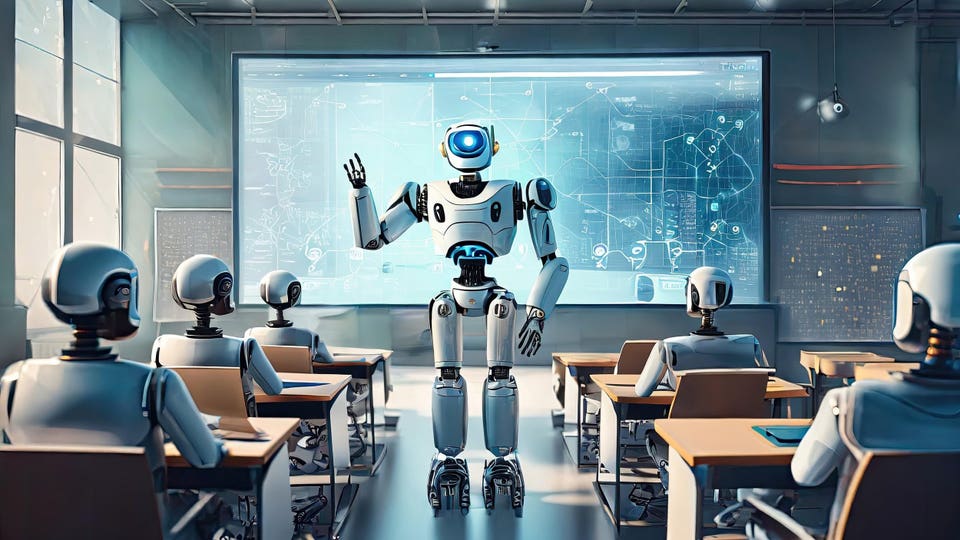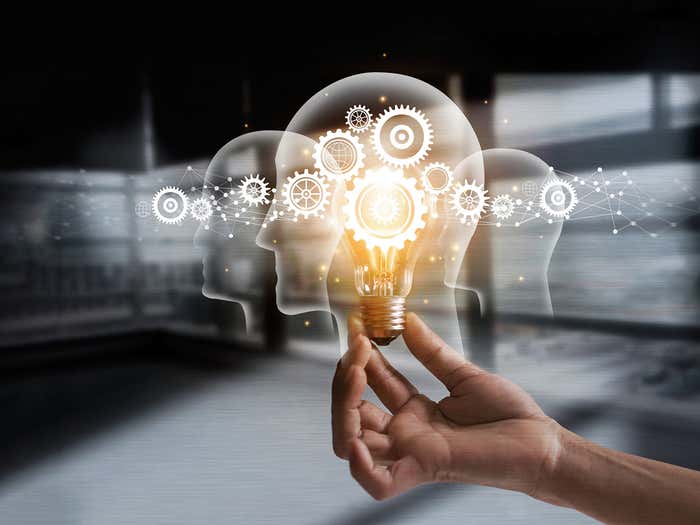How Generative AI Will Change The Jobs Of Teachers
Adobe Stock
No job is more important than educating young minds, and no AI will ever replace a great teacher. However, educators are already using generative AI to help with creative tasks or automate routine aspects of their work. This frees up more time for the really important jobs, like spending time with students.
With generative AI poised to transform every profession, understanding the impact it will have on our day-to-day working lives, the opportunities it creates for innovation and improvement, and, of course, the potential risks is critical for everyone.
So, I thought it would be a good idea to put together a series of quick guides to how different jobs and professions will likely change, starting with teaching.
Here, I‘ll overview some of how generative AI is already being used to augment the irreplaceable human skills needed in education. We’ll also take a peek into the future to think about how the fundamental role of the teacher will evolve thanks to the impact of this technology.
Augmenting Teaching Skills
In late 2023, the UK government examined how generative AI is being used in education through a call for evidence.
After speaking to teachers, they found that most reported that they were already using generative AI tools in their jobs or had experimented with them. Those who used them said that benefits included saving time, improving the quality of their teaching, and improving engagement with students.
The most popular uses include:
· Course and lesson planning – Teachers use natural language tools like ChatGPT to create lesson plans, suggesting topics and learning activities based on the required curriculum.
· Research – To help teachers themselves get a better understanding of the subjects they plan to teach.
· Content creation – Quickly generating reading material, images, games, quizzes, or checklists covering the subjects being studied.
· Language learning and translating – Enabling teachers to communicate more effectively with multi-lingual classes.
Generative AI isn’t without risks, though. Inaccurate responses, inappropriate content, and bias can all clearly cause big problems when they occur in an educational setting. While I believe teachers and educators should be encouraged to experiment with the technology, these are risks that have to be kept in mind.
Personalized Learning
This is one of the most exciting potential use cases for generative AI in education.
Children (and students of all ages) all learn differently, and with generative AI, it will be possible to create individualized lessons and learning plans. These could be tailor-made to fit the needs of specific students.
For example, students who show they are better at taking in information visually can be shown more pictures, charts, and graphs, while others may learn better from puzzles, tasks, and games.
Online course providers such as Coursera already use feedback algorithms to adjust course content and learning speed based on performance. In the near future, I expect to see this extended to traditional classroom-based learning, too.
Generative AI can also provide personalized feedback more frequently and in greater detail than a teacher can manually when dealing with a large class.
AI can be a particularly valuable resource for providing for learners with special educational needs. Teachers will use AI to augment their own ability to identify the strengths and weaknesses of different teaching and learning methods.
It also has huge potential to help “lifelong learners” – those members of the workforce who are consistently updating their knowledge and learning new skills to take on new challenges and responsibilities.
Learners in this group can come with a variety of backgrounds and experiences, so generative AI can be used to identify the best teaching strategies.
However, this is one education-related field where privacy and security will be particularly critical. Algorithms like those described here would require personal and very sensitive data, and great care will have to be taken to mitigate the risks of data breaches or loss.
Automating Routine Work
Most teachers prefer to spend more time working in direct contact with students and less time on tasks like grading papers or drafting routine communications.
Good news! These are exactly the type of tasks that generative AI can be very good at. There are already several platforms on the market offering specialized generative tools to help teachers with these jobs, including Teachermatic and Microsoft’s Education Copilot.
These can accelerate repetitive but vital tasks like writing letters and emails to pupils or their families, creating class newsletters, summarizing reports and producing documents like policy and risk assessment materials.
Grading papers might be a more controversial use case, particularly as we know that generative AI can sometimes have accuracy issues. At the moment, this is mostly in an experimental phase, with teachers testing its capabilities but not yet using it to assign final grades.
Other popular uses that are relevant in teaching include transcribing text from video-based learning materials or converting text into voice for audio-based learning, proofreading teaching materials, and creating compliance checklists for tasks such as safeguarding or data protection.
The Changing Role Of Teachers
As generative AI reshapes the world of education, teachers will find their role evolving further away from being providers of knowledge and towards becoming learning facilitators.
Perhaps the most significant shift in the role of educators will be an increased focus on nurturing skills such as critical thinking, creativity, and emotional intelligence. These skills will be paramount in a future where our worth is increasingly measured by our ability to perform tasks that machines cannot do or are not as proficient in. Beyond academic teaching, educators play a critical role in safeguarding the welfare of their students, a responsibility that extends far beyond the confines of traditional teaching. This involves not only protecting students from physical harm but also supporting their emotional and mental health, ensuring a safe and inclusive learning environment that fosters resilience and respect. The human touch provided by teachers becomes an indispensable pillar of education, emphasizing the irreplaceable value of empathy and understanding in nurturing well-rounded, emotionally secure individuals.
Teachers will, of course, also have a very important role to play in making sure their students are able to use generative AI itself. For decades, essential technology skills like coding, word processing, or computer-aided design have been an essential part of the curriculum. Very soon, a basic grasp of interacting with AI systems will be critical from a young age, too, and today’s teachers will have the job of passing on that knowledge.
This shift will require educators to become proficient not just in their subject matter or field of education but also in navigating the tools and technologies that are already rewriting the rules of teaching and learning.





